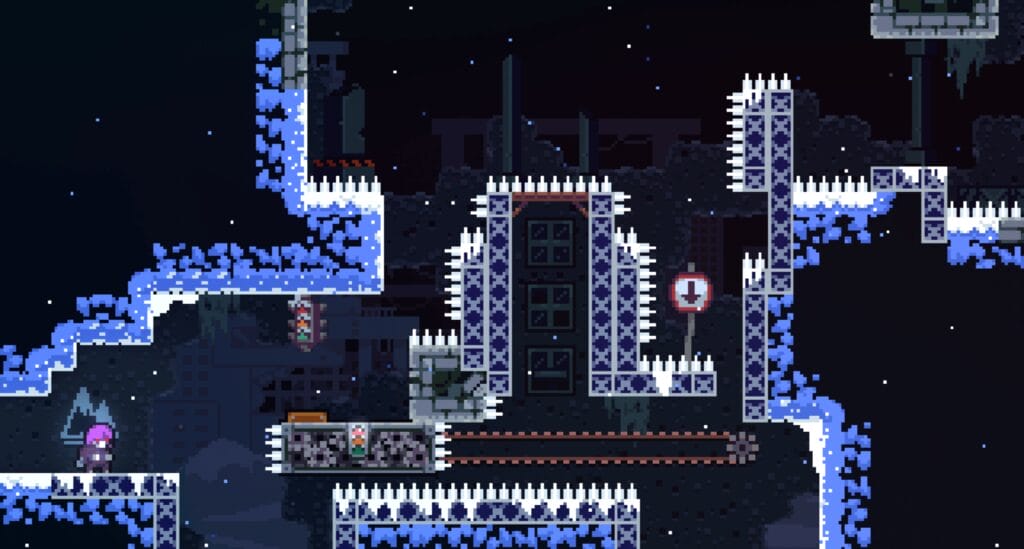In video game environment design, it’s key to focus on core gameplay first. Creating a simple environment that supports gameplay often works better than an overly intricate one that distracts players. Color and lighting can set the mood effectively, guiding attention without complicating visuals. Emphasizing readability helps players navigate easily through distinct landmarks and clear pathways. Modular designs allow for asset reuse, saving time while providing variety. Testing with real players offers insights into confusion points that may need refinement. By using sound design and keeping a consistent theme, environments can enhance immersion without visual clutter or excessive detail.
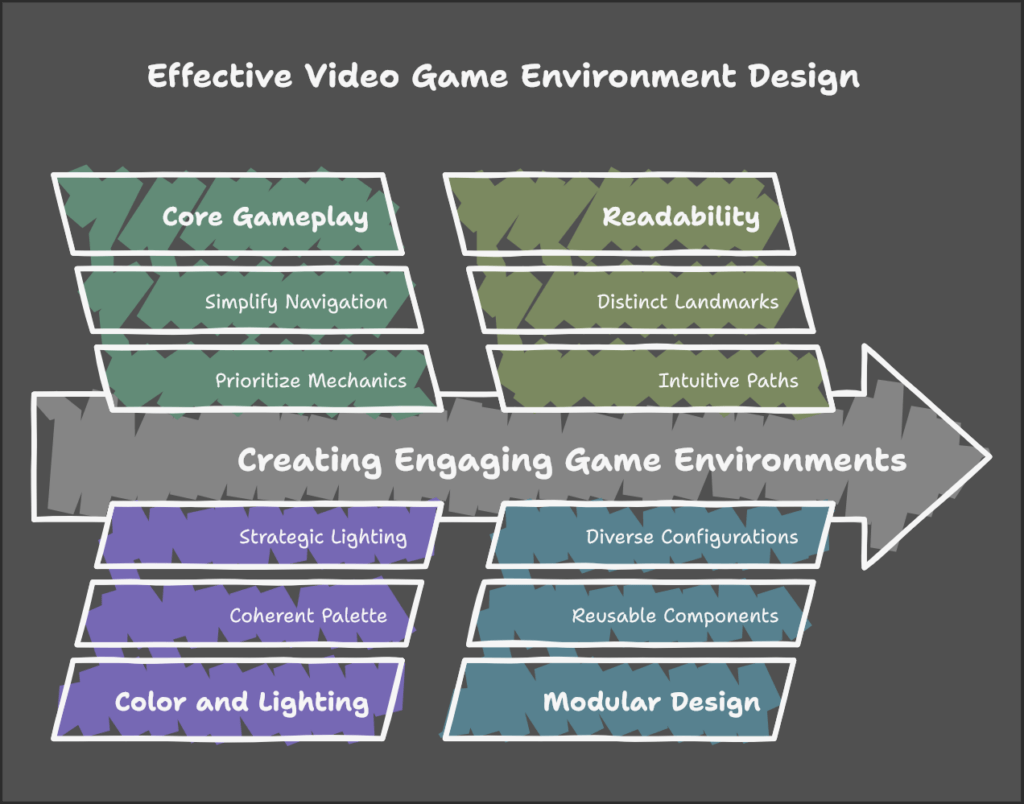
1. Focus on Core Gameplay
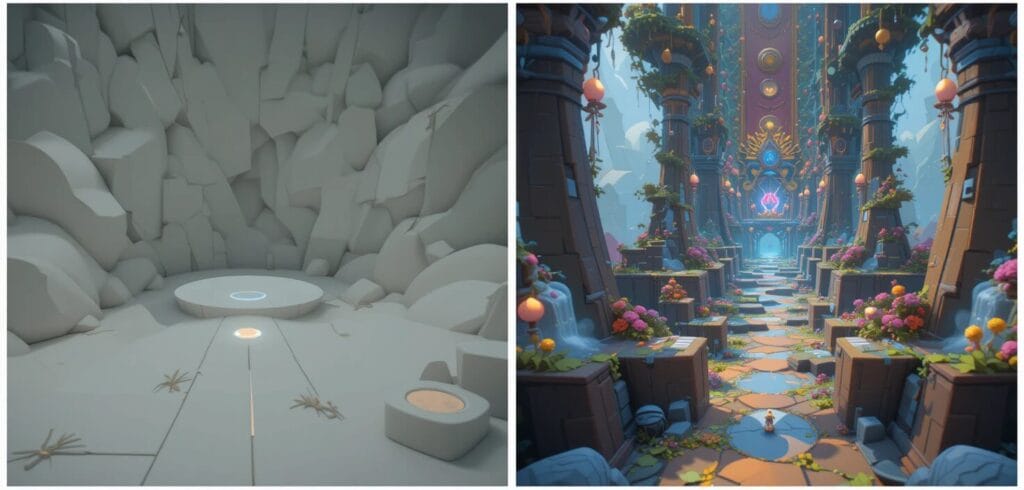
When designing video game environments, it’s crucial to prioritize core gameplay mechanics over intricate visual details. A well-structured environment that supports and enhances gameplay can be far more effective than a complex one that distracts players. For instance, in a platformer, the layout should facilitate smooth movement and jumping rather than overwhelming players with excessive decorations. Simple environments can also allow for easier navigation, letting players focus on their objectives without being sidetracked by unnecessary visual clutter. This approach not only maintains the player’s attention but also ensures that the gameplay feels cohesive and engaging.
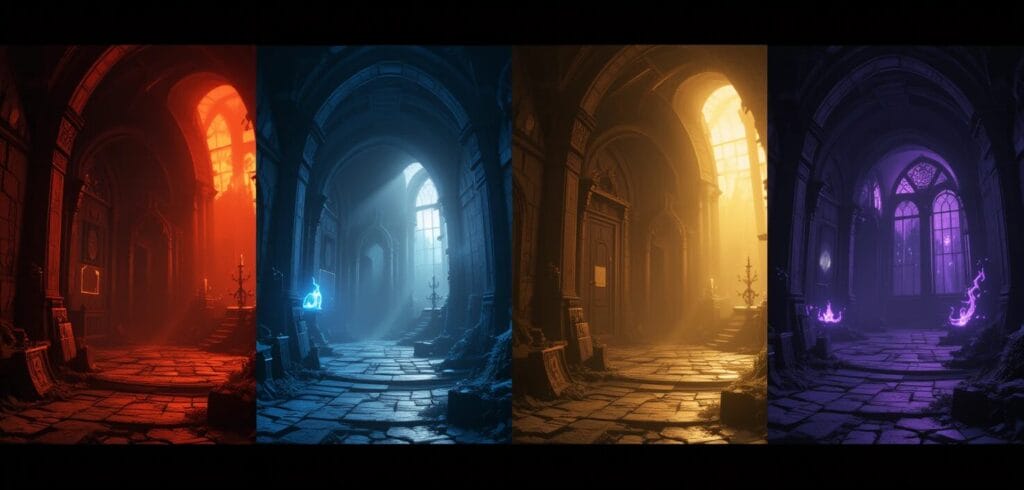
2. Use Color and Lighting
Color and lighting play a crucial role in environment design, as they can significantly influence the mood and atmosphere of a game. By selecting a coherent color palette, designers can evoke specific emotions; for instance, warm colors like reds and oranges can create a sense of urgency or excitement, while cool colors such as blues and greens can instill calmness or mystery. Lighting can further enhance these effects—bright, well-lit areas can indicate safety or importance, while shadows can create tension or conceal danger.
Strategically placed lights can guide player attention to key locations or objectives, making navigation intuitive without overwhelming players with unnecessary detail. For example, a flickering light near a hidden passage can entice players to explore, while a well-lit path can lead them safely through complex environments. Utilizing color and lighting effectively allows for a more immersive experience that communicates more than just the physical space, focusing the player’s attention where it matters most.
3. Emphasize Readability
Making an environment easy to navigate is crucial in game design. Players should quickly understand where they are and where they need to go. This can be achieved through the use of distinct landmarks, such as unique buildings or notable natural features, which can serve as visual cues. Paths should be clear and intuitive, leading players naturally from one objective to the next. For example, in games like “The Legend of Zelda: Breath of the Wild,” the use of towering mountains and glowing shrines helps players orient themselves and makes exploration feel seamless. By ensuring that players can easily read the environment, you reduce frustration and enhance their overall experience.
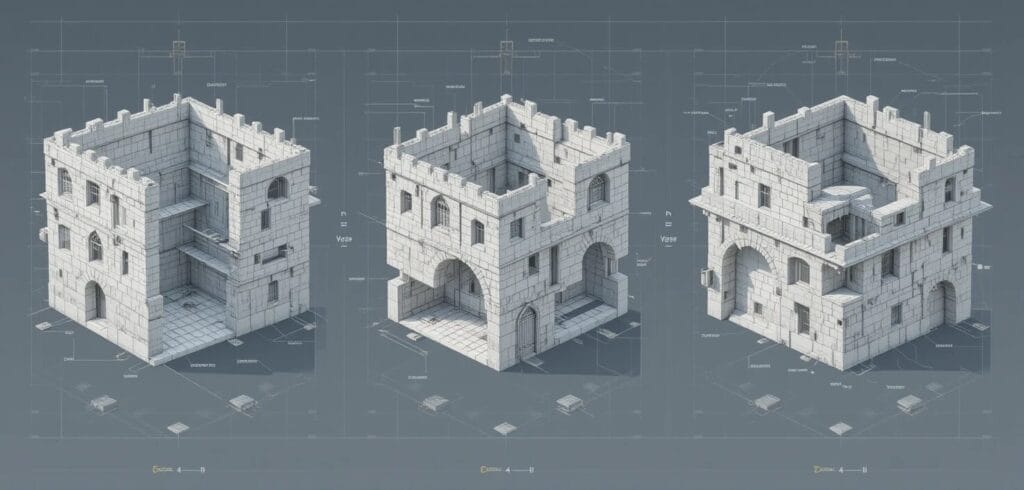
4. Modular Design
Modular design is a powerful technique in video game environment creation that allows developers to create versatile assets which can be reused across different areas. By designing components that fit together in various configurations, designers can build rich and diverse environments without the need for creating everything from scratch. For instance, a set of modular building pieces can be arranged in multiple layouts to form different structures, giving each level a unique feel while maintaining a cohesive visual language. This not only saves time and resources but also enhances efficiency in the development process. A great example can be seen in games like “Fallout 4,” where modular elements allow players to customize and build their own settlements, demonstrating the effectiveness of this approach in both design and gameplay.
5. Iterative Testing
Iterative testing is crucial in video game environment design. By continuously testing your environment with real players, you can gather valuable feedback that highlights areas of confusion or frustration. This process allows you to make necessary adjustments without overthinking the initial design. For instance, if players consistently struggle to find a key location, you can tweak the layout or add subtle visual cues to guide them. This not only improves the player’s experience but also helps you refine your design in a practical way. Games like “The Legend of Zelda: Breath of the Wild” benefited from iterative testing, where player interactions influenced adjustments to the environment, enhancing exploration and engagement. Embracing this testing phase ensures that the environment evolves alongside player needs, leading to a more enjoyable gameplay experience.
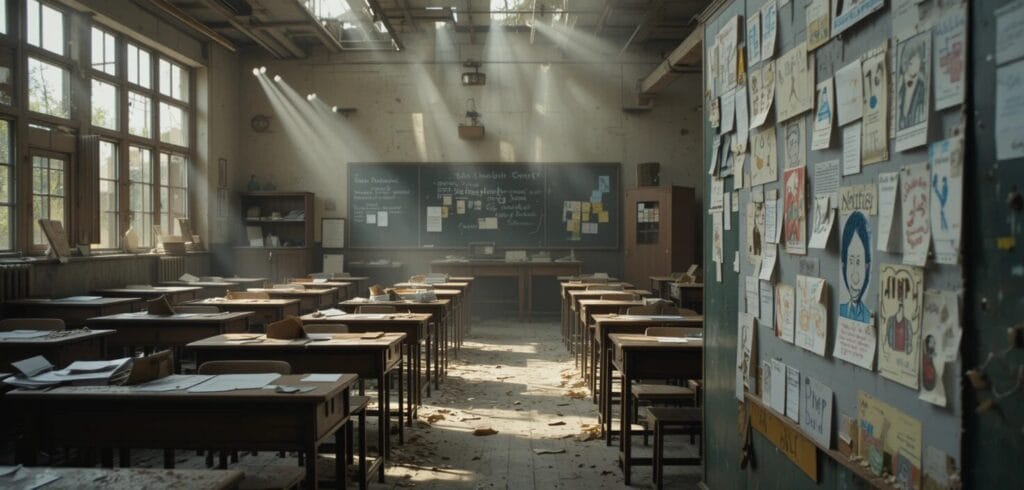
6. Environmental Storytelling
Environmental storytelling is a powerful tool in video game design. It allows players to piece together narratives through their surroundings. By placing objects, signs, and other details strategically, you can hint at a backstory without needing lengthy cutscenes or dialogue. For instance, in a post-apocalyptic game, the remnants of a family dinner table set for a meal can evoke a sense of loss and history. Similarly, scattered personal items can suggest previous inhabitants and their stories. This approach not only enriches the world but also encourages players to engage more deeply with the environment. Simple visual cues, like blood stains leading to a doorway or a child’s toy left behind, can communicate powerful emotions and events, making the world feel alive and immersive.
- Utilize background details to convey narrative.
- Include environmental clues that hint at past events.
- Use props and set pieces to enhance world-building.
- Design spaces that evoke emotion and atmosphere.
- Incorporate lore elements through visual design.
- Create contrasting areas to highlight story progression.
- Encourage player exploration through interactive elements.
7. Limit Visual Clutter
In videogame environment design, limiting visual clutter is crucial for maintaining player focus and enhancing gameplay. An environment overloaded with unnecessary details can distract players from core mechanics and objectives. For instance, in a platformer, having clear pathways and distinct landmarks helps players navigate effectively, while a cluttered scene might lead to confusion and frustration. A well-organized space allows players to easily identify important items or objectives, guiding their attention where it needs to be. Games like “Journey” exemplify this approach, using minimalistic designs that provide a serene experience without overwhelming players. By intentionally simplifying the environment, designers create a more engaging and enjoyable experience.
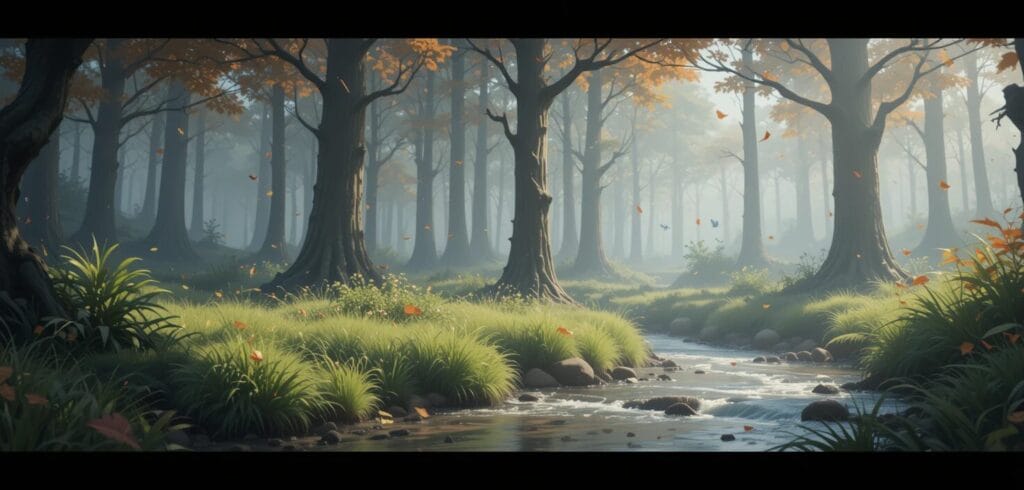
8. Dynamic Elements
Dynamic elements can significantly enhance a game’s environment by adding life and interactivity without overwhelming the design. Simple moving objects, like swaying trees, flowing water, or flickering lights, can create a sense of realism and immersion. For instance, in a forest setting, birds flying in and out of view or leaves rustling in the wind can make the environment feel alive. Additionally, interactive features such as doors that open, switches that activate lights, or platforms that move can engage players and encourage exploration. These dynamic elements not only enrich the player’s experience but also help to guide their attention and actions, making the environment feel more responsive and engaging. The key is to keep these elements straightforward, ensuring they complement rather than complicate the core gameplay.
9. Thematic Consistency
Thematic consistency is crucial in video game environment design. It ensures that all elements of the game world, from architecture to color schemes, align with a central idea or mood. For example, in a fantasy game, a consistent use of medieval architecture, earthy colors, and magical elements can create a cohesive experience that immerses players in that world. This consistency helps players easily understand the environment and enhances their connection to the narrative. In contrast, mixing styles or themes can confuse players and detract from immersion. Games like “The Legend of Zelda: Breath of the Wild” exemplify this, as its environments, art direction, and sound design all work together to support the overarching theme of adventure and exploration.
10. Leverage Sound Design
Sound design is a powerful tool in video game environment design that often gets overlooked. By incorporating ambient sounds, a game can create an immersive atmosphere that enhances the player’s experience without adding visual complexity. For example, the rustling of leaves in a forest or distant thunder in a storm can evoke feelings of suspense or tranquility, helping to set the mood. Additionally, sound cues can guide players to important areas or indicate changes in gameplay, such as an enemy approaching or a puzzle being solved. This auditory feedback not only enriches the environment but also aids navigation, making it easier for players to engage with the world around them. By focusing on sound, designers can elevate their environments in meaningful ways while keeping the overall design simple.
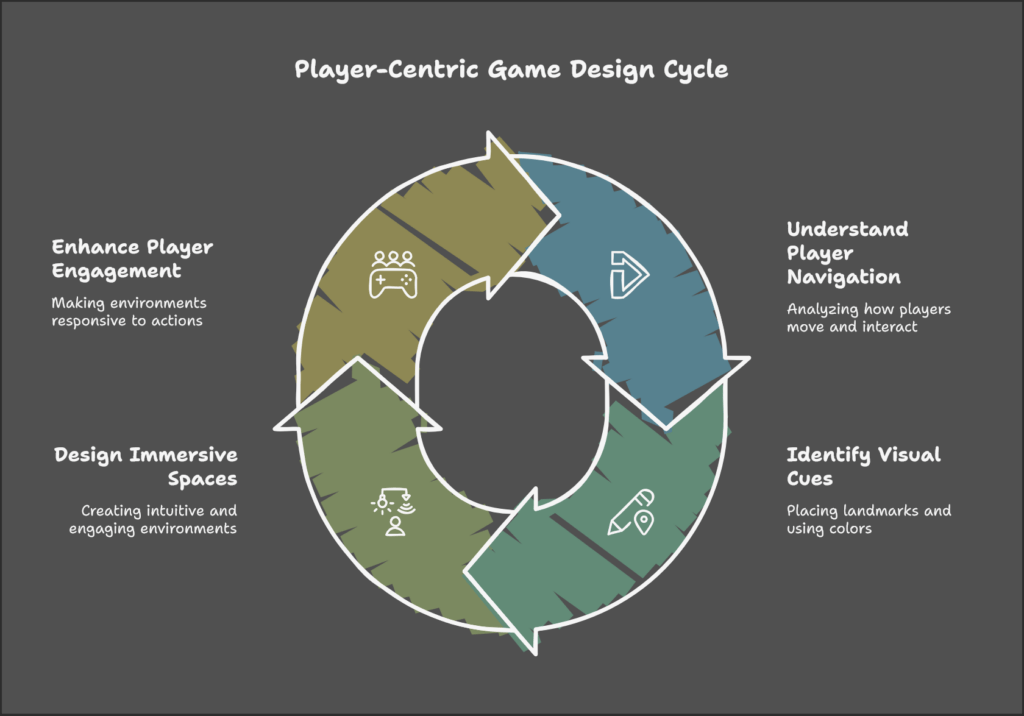
11. Player-Centric Design
Designing video game environments with the player in mind is crucial for creating an enjoyable experience. This means understanding how players navigate and interact with the space. For instance, players often look for visual cues that help them identify paths or objectives. By placing distinct landmarks or using contrasting colors for important areas, designers can guide players naturally through the environment. Additionally, considering the player’s perspective helps in creating spaces that feel immersive and intuitive. For example, in platformers like ‘Super Mario’ games, the level designs encourage exploration while ensuring players can easily discern where to jump or move next. Ultimately, player-centric design enhances engagement by making the environment feel responsive to player actions.
12. Simplify Asset Creation
In game design, focusing on quality over quantity can significantly enhance the environment without overwhelming it. By creating fewer, high-quality assets, developers can ensure better performance and a polished appearance. For instance, a beautifully designed tree or a well-crafted building can provide more impact than a forest filled with low-quality models. This not only improves visual fidelity but also allows for easier optimization, which is crucial for maintaining smooth gameplay. Moreover, using these high-quality assets in various combinations can create diverse scenes without the need for constant new creations, saving both time and resources.
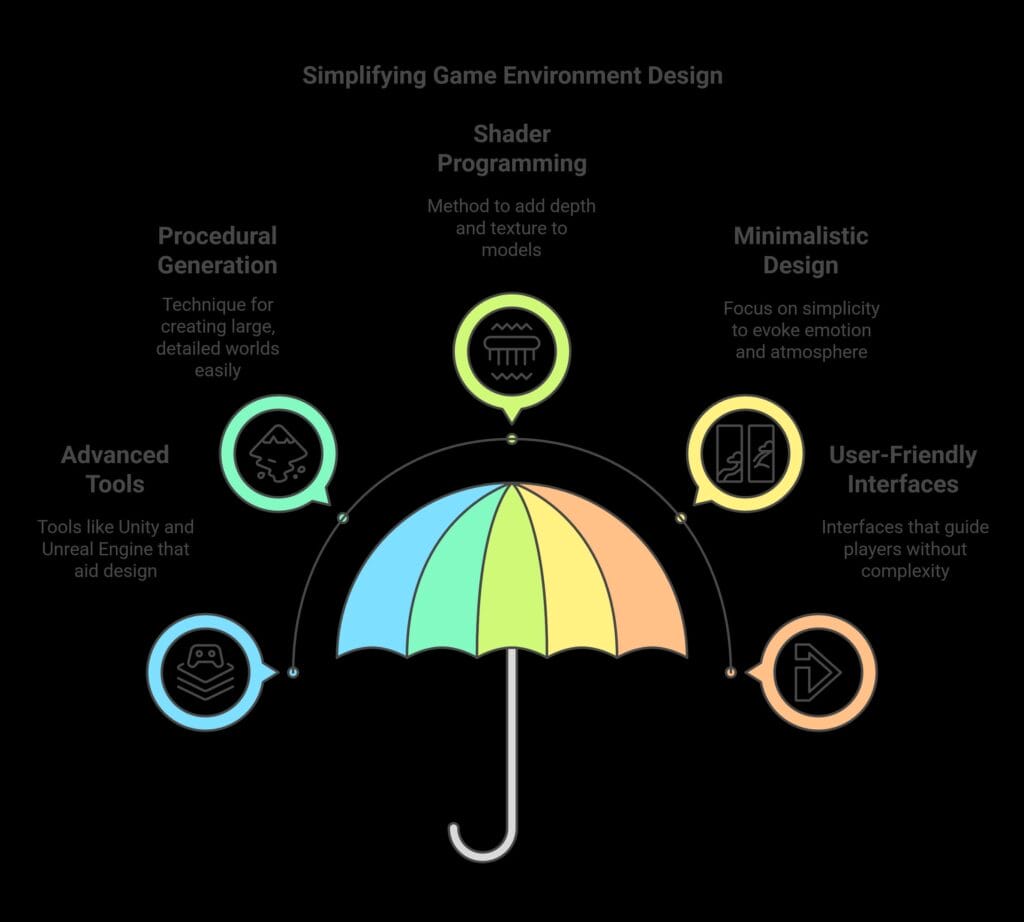
13. Cutting Edge but Simple
In the realm of video game environment design, leveraging cutting-edge tools and techniques doesn’t have to mean creating overly complex visuals. Modern game engines like Unity and Unreal Engine offer powerful features that can help designers create stunning environments with relative ease. For instance, using procedural generation can allow for the creation of vast landscapes or intricate structures without having to manually design every detail. Additionally, adopting techniques such as shader programming can add depth and texture to simple models, making them pop without overwhelming the player with detail.
A prime example of this can be seen in games like “Journey,” which utilizes minimalistic design combined with stunning visuals to convey emotion and atmosphere. The game’s landscapes are vast and simple, yet they evoke a strong sense of exploration and wonder. By focusing on the essence of the environment rather than getting lost in intricate details, developers can create experiences that resonate with players.
Furthermore, integrating user-friendly interfaces within these environments can enhance gameplay without the need for complex design. Simple navigational aids, like waypoints or visual guides, can effectively lead players through a space while maintaining the aesthetic integrity of the game. Ultimately, embracing simplicity while using advanced tools allows designers to create memorable, engaging worlds that feel fresh and inviting.
14. Gather Inspiration
Finding inspiration is a crucial part of environment design in video games. Look at successful games that are known for their effective environment designs. For instance, games like “Journey” and “Firewatch” utilize simplicity to create immersive worlds. Analyze what makes their environments work—consider how they balance aesthetics with functionality. By examining how these games use color, space, and storytelling through their environments, you can gather ideas that enhance your own designs. Inspiration can also come from various art forms, architecture, and even nature. The goal is to see how others have achieved success with straightforward yet impactful designs, helping you to avoid overcomplicating your own environment.
15. Balance Between Detail and Simplicity
Finding the right balance between detail and simplicity in video game environment design is crucial. Too much detail can overwhelm players, causing distraction from gameplay. On the other hand, overly simplistic environments might lack engagement and immersion. A good approach is to prioritize key elements that enhance gameplay while ensuring the environment feels alive and believable. For instance, in a fantasy game, you might include carefully placed foliage and subtle textures on walls to create depth without making the scene feel cluttered. Think about how games like “Journey” use vast, open spaces with minimal detail to create a sense of wonder and exploration. By focusing on what truly matters, designers can create environments that resonate with players without the need for excessive intricacies.
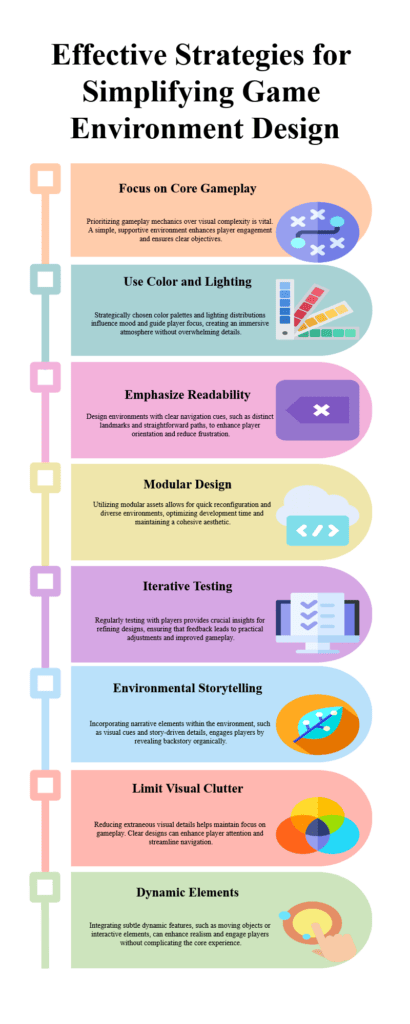
Frequently Asked Questions on Game Environment Design
1. What are the key elements of good video game environment design?
Good video game environment design includes creating a believable setting, using appropriate colors and textures, and ensuring the layout supports gameplay.
2. How can I improve my game’s environment without making it too complicated?
To improve your game’s environment, focus on adding small details, like unique objects or subtle lighting changes, that enhance the space without overwhelming players.
3. What role does lighting play in video game environments?
Lighting sets the mood and guides players’ attention. It can highlight important areas, create atmosphere, and influence how players perceive the environment.
4. How can I make my game world feel more immersive?
You can make your game world immersive by incorporating interactive elements, sound effects, and dynamic weather changes that respond to player actions.
5. What are common mistakes to avoid in environment design?
Common mistakes include cluttering the scene with too many details, having inconsistent styles, and not considering player navigation, which can confuse and frustrate players.









